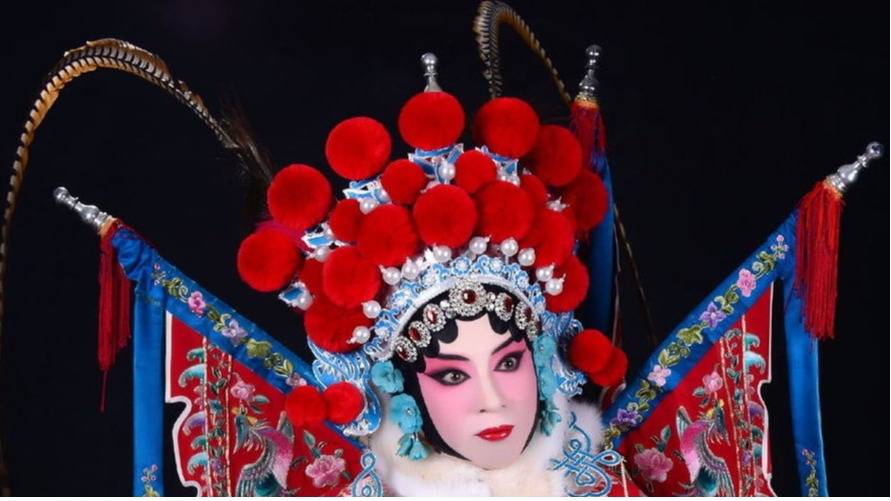Peking Opera, also known as Ping Opera and Jing Opera, is one of China's national treasures and the most influential type of Chinese opera, originating in Beijing and developing throughout the country. The influence of Peking Opera is so extensive that it is known as the "National Opera". Named after Mei Lanfang, the Peking Opera performance system is regarded as a representative of the Oriental theater performance system and one of the three major performance systems in the world. Peking Opera is an important expression of traditional Chinese culture, and many of its artistic elements have been described as symbols of traditional Chinese culture. in May 2006, Peking Opera was approved by the State Council to be included in the first batch of national intangible cultural heritage list, and in 2010, it was inscribed on the Representative List of the Intangible Cultural Heritage of Humanity on the List of Intangible Cultural Heritage of the UNESCO.
The beauty of Peking Opera is diverse. The uniqueness of Peking Opera lies in the fusion and absorption of various beautiful tunes, such as Hui tune, Han tune, Bangkang tune and Kunqu tune, etc. The rhythms of the tune and the language are beautiful and elegant. The different combinations of singing, reciting, acting and playing in Peking Opera performances give a stance interpretation to the melodious rhyme, and where there is sound, there is also shadow, giving the viewer an all-round artistic enjoyment. The beauty of Peking Opera also lies in the details hidden in the virtual, the exquisite and gorgeous costumes, the elaborate make-up, the extreme pursuit of movement and eyes all bring the viewer a rich aesthetic experience.
Mei Lanfang's visit to the United States in 1930 brought the art of Peking Opera to the world stage, and it was not only the Peking Opera on the stage that was presented to the American audience. During Mei Lanfang's visit to the United States, the beauty of Peking Opera was encapsulated and summarized in the form of texts, musical scores, and drawings. The written material, The Organization of Chinese Drama, Mei Lanfang, divides the beauty of Chinese Peking Opera into categories such as singing, movement, clothes, helmets, and hats, so that the art can be appreciated while the text is being enjoyed. Mei Lanfang translated Chinese musician Liu Tianhua's American visiting arias one by one into the Mei Lanfang Song Score, which corresponds to the staff and rule scores, providing foreign audiences with the possibility of exploring the music of Chinese opera with the violin, linking the sound of the Chinese erhu with the sound of the Western violin strings, and opening up the exploration of the beauty of the Peking Opera, which is a "stringed alternative to the voice of the song". In addition, Mei Lanfang and Qi Shan also invited painters to draw "Chinese Drama Patterns", which were divided into 15 categories, and hung 191 volumes with a total of 1,665 images in the anteroom of the performance theater, so that the audience could understand the "origins" of Chinese Peking Opera in the most intuitive way, and the rich display of images led the audience to enter different cultural venues, and then to watch the performances, which provided an aesthetic experience for the exploration of the beauty of the Peking Opera from the static to the dynamic.
The beauty of Peking Opera lies in the theater, but not only in the theater. The condensed beauty of Peking Opera and its fusion with other art forms has always been the direction of contemporary exploration, and "Qinfang Meilan" is a representative of this. There are two meanings of it, the first one refers to a fusion performance combining the classic singing of the Mei School with the playing of the guqin, an idea that was proposed in 2017 and premiered in 2018 and is still on stage today; the second refers to the collection of scores of the same name that has been published by the People's Music Publishing House in 2021. The stage version of "Qinfang Meilan" uses guqin to replace the traditional instruments in opera, but does not use it as an accompaniment. The rhythmic tones of the guqin are presented in juxtaposition with the classic sounds and shadows of the Mei School, which is not only a re-interpretation of the Chinese polyphonic form, but also an exchange and dialog between elegance and secularism and between the ancient and modern. Its stage style pursues elegance, mediocrity, calmness, and depth, but does not lack artistic exploration of fusion and innovation. The collection of scores "Qinfang Meilan" offers multiple interpretations of the beauty of Peking Opera. The text includes contemporary scholars' aesthetic appreciation of the 10 repertoires of the Mei School, as well as the text of the scores, which are interpreted from multiple perspectives, such as guqin minuscule scores, five-line scores, and simplified scores. The creative concepts and aesthetic pursuits of the behind-the-scenes workers of the stage version appear in the preface and appendix of the score book, which not only creates a relationship of mutual interpretation between the stage version and the score version of "Qinfang Meilan," providing a reference example for the continuous dissemination and in-depth exploration of the aesthetic value of contemporary stage works, but also allows the pursuit of the aesthetics of Peking Opera on today's stage to echo with Mei Lanfang in 1930, demonstrating that the beauty of Peking Opera can be watched, written, played and sung.
